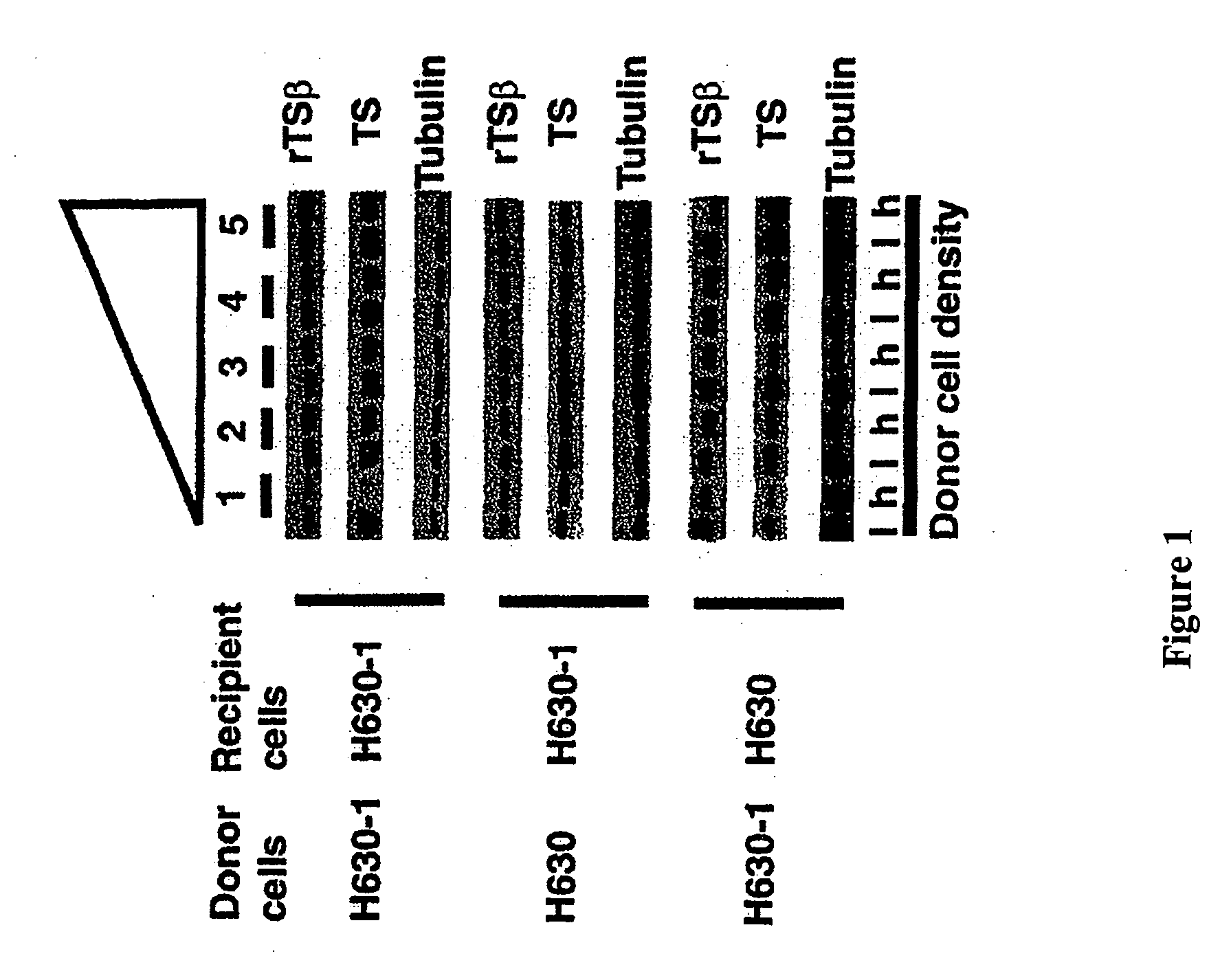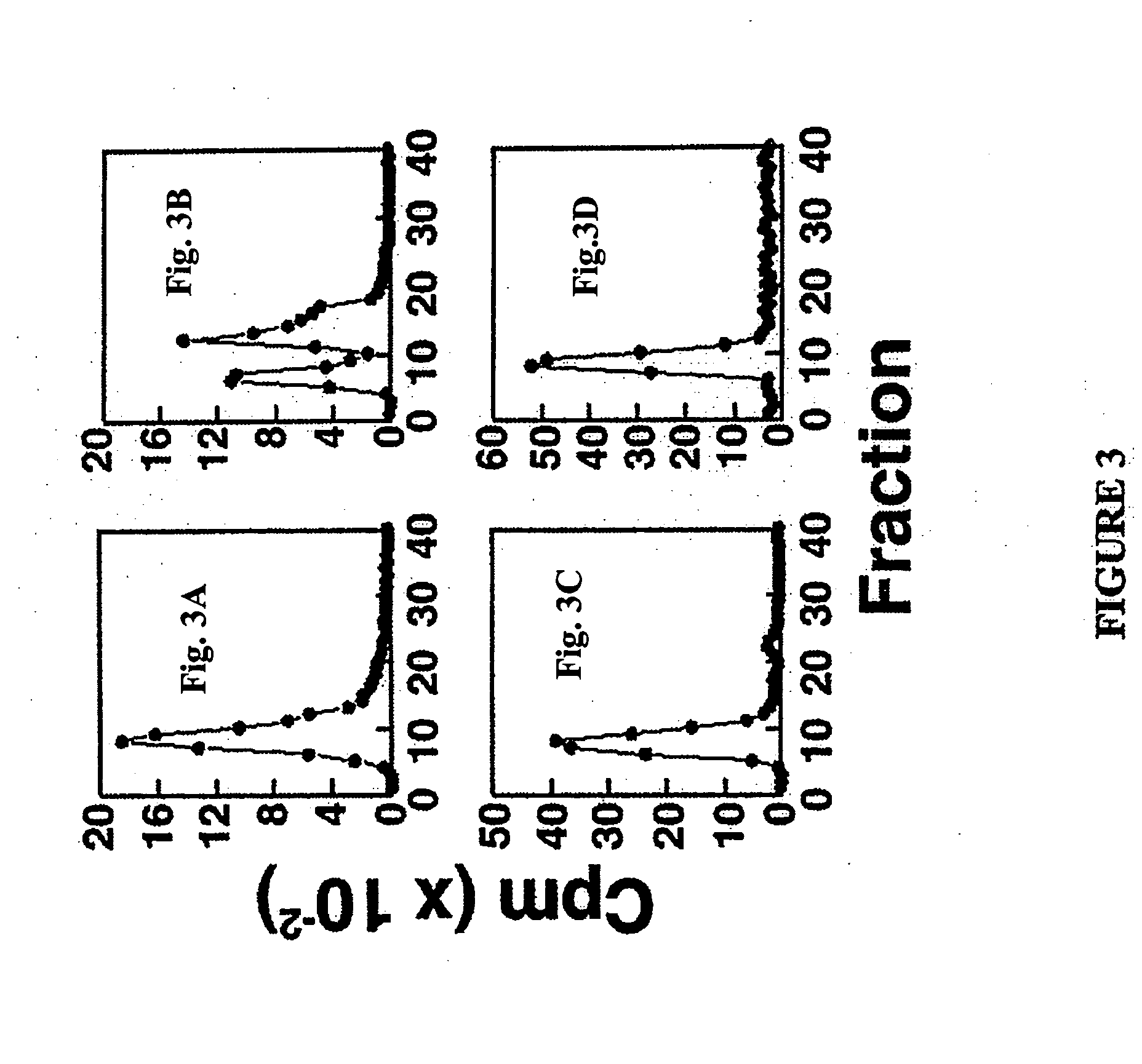Acyl homoserine lactones for inhibition of cell growth
a technology of acyl homoserine lactone and cell growth inhibition, which is applied in the field of cancer, can solve the problems of resistance or non-responsiveness of tumor cells, and achieve the effects of enhancing the effect of a chemotherapeutic agent, and enhancing the growth inhibitory effect of cancer cells
- Summary
- Abstract
- Description
- Claims
- Application Information
AI Technical Summary
Benefits of technology
Problems solved by technology
Method used
Image
Examples
example 1
[0039] This Example describes the synthesis of AHLs. The structures of the compounds used in these Examples are presented schematically in FIG. 8A. An (L) or a (D, L) designation refers to the chiral α-carbon in the homoserine lactone ring. Specific AHL stereoisomers were prepared from their respective homoserine lactone precursors. AHLs are (L) stereoisomers unless otherwise specified. Preparation of representative AHLs was as follows.
[0040] N-hexanoyl (L-)-homoserine lactone were provided as follows. To 0.583 g (3 mmoles) of sodium caproate and 0.546 g (3 mmoles) of (S)-(−)-alpha-amino-gamma-butyrolactone hydrobromide in 25 mL dry acetonitrile (CH3CN) were added 0.604 g (3.15 mmoles) of 1-[3-(dimethylamino)propyl]-3-ethylcarbodiimide hydrochloride. After stirring overnight, the CH3CN was evaporated and the residue transferred to a separatory funnel with 100 mL of ethyl acetate (EtOAc). The EtOAc layer was washed with 50 mL of 10% ammonium chloride (NH4Cl). The aqueous layer was e...
example 2
[0046] This Example demonstrates that rTS gene products can cause down regulation of TS expression. Conventional techniques were used to propagate and maintain the H630 and H630-1 cell lines (see, for example Dolnick, et al. (2003) Cancer Biology & Therapy, 2: 364-369; Stephanie, et al. (2001) In: Proceedings AACR, New Orleans, La., pp. 493). For the investigation of effects on TS expression, cells were extracted at 18-20 hours after the addition of AHLs. For Western blot analysis, proteins were extracted and Western blotting was performed by standard methods using blots blocked with 5% nonfat dried milk dissolved in 10 mM Tris-HCl, pH 8.0, 150 mM sodium chloride, 0.05% Tween-20. The blots were probed using either monoclonal (4D5E11) or polyclonal antibodies to TS and then probed for α-tubulin (monoclonal antibody B-5-1-2, Sigma Biochemicals) to confirm equivalent protein loading. The same blots were successively probed with anti-rTSβ or anti-TS, and finally anti-tubulin. After prob...
example 3
[0050] This Example demonstrates that conditioned medium from human cells contains AHLs. To illustrate this embodiment, extracts of media obtained from H630-1 cells, H630 cells or control culture medium were analyzed using a luciferase based bacterial bioassay (Winson et al., FEMS Microbiol. Lett, 1998, 163:193-202). Briefly, this assay makes use of a recombinant bacteria that does not normally make use of an AHL-based quorum sensing system The bacteria contains a recombinant plasmid that expresses luciferase protein under the control of an AHL receptor that was transfected into the bacteria. Exposure of the bacteria to AHLs, or other compounds that can bind to the receptor and induce the desired conformational changes, results in the expression of the luciferase protein and the production of luminescence. The measurement of luminescence reflects the extent of activation of the recombinant quorum sensing system. To perform the assay, cell culture medium (RPMI1640+10% dialyzed fetal ...
PUM
| Property | Measurement | Unit |
|---|---|---|
| diameter | aaaaa | aaaaa |
| pH | aaaaa | aaaaa |
| volume | aaaaa | aaaaa |
Abstract
Description
Claims
Application Information
 Login to View More
Login to View More - R&D
- Intellectual Property
- Life Sciences
- Materials
- Tech Scout
- Unparalleled Data Quality
- Higher Quality Content
- 60% Fewer Hallucinations
Browse by: Latest US Patents, China's latest patents, Technical Efficacy Thesaurus, Application Domain, Technology Topic, Popular Technical Reports.
© 2025 PatSnap. All rights reserved.Legal|Privacy policy|Modern Slavery Act Transparency Statement|Sitemap|About US| Contact US: help@patsnap.com



